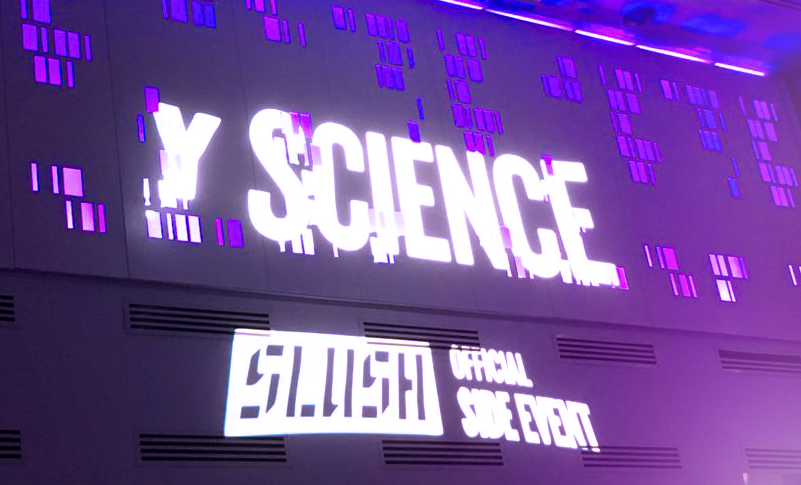
Photo by Johanna Puutio.
One of the biggest problems that life sciences students face nowadays is that education and real life seem to be in two different planes that doesn´t mix. No matter how well trained you are in microbiology, genetics, neurobiology, etc., once you finish your studies and are released into the world, you just don’t know what to do. Universities are very good at producing great (and not so great) researchers and teachers, no doubt about that, but what about entrepreneurs? What about scientist with knowledge in administration and bureaucracy? Students are just helpless when trying to get into the industry world. This is the reason why courses such as “integrative health biosciences” and events like Slush Y Science are so important, as they bring the academic plane to real life.
During the Slush Y Science event we got to see exciting, ongoing projects of huge relevance to the world: orals vaccines for bees, quantum computing, synthetic biology and new bioimaging systems to name a few. We also got to know about different ways to introduce ourselves into the start up scene and how to go from academia to industry with interesting talks about the European Innovation Council (EIC), Testa Center and headhunters. But the most interesting part of the event was, in my opinion, the pitching competition. Eight very different startups with very different services going from mass production of a new sweetener to peptide chips for drug development competing for 30.000 euros. 30.000 euros that could mean the difference between success or failure. And with all of the products presented being so different and so relevant in their respective fields, what is it that judges are looking for in a winner?
First and foremost, relevance and innovation of the product/service in its field. Investors are usually not philanthropic, they are looking for competent startups that will report them a benefit in the future. But when all eight startups met this requirement, other aspects must be taken into account. The charisma of the presenter and his/hers ability to answer in a short and satisfactory way to the jury’s questions is key to winning a competition such as this one. Being able to charm the audience and convince them that the product you offer is better than all the rest is of great importance, but charm by itself won’t do the trick. The jury made it very clear that one of the things they were looking for was future projection of the company, how much money would be necessary to take the next step, what that step would be and if the group was ready to take it.

Now, analyzing all of these factors, how many of them would an average student be able to meet? Do we know enough to calculate the budget that would be necessary for a project? Are we trained well enough in the social skills required to sell a company to investors? Would we be even able to handle all the paperwork required to fill in a loan application?
I agree that it is of upmost importance for a scientist to have deep knowledge on his area of expertise, but the training needed to achieve that shouldn’t neglect on all the other aspects mentioned above. As one of the presenters said during the event, “science is the easy part”. Slush Y Science and Integrative Health Biosciences are great ways to take down the wall separating scientific training and reality, of getting the bigger picture and being really ready for what awaits once our studies have ended.
– Carlos Lapedriza, IHB student and LSE blogger

